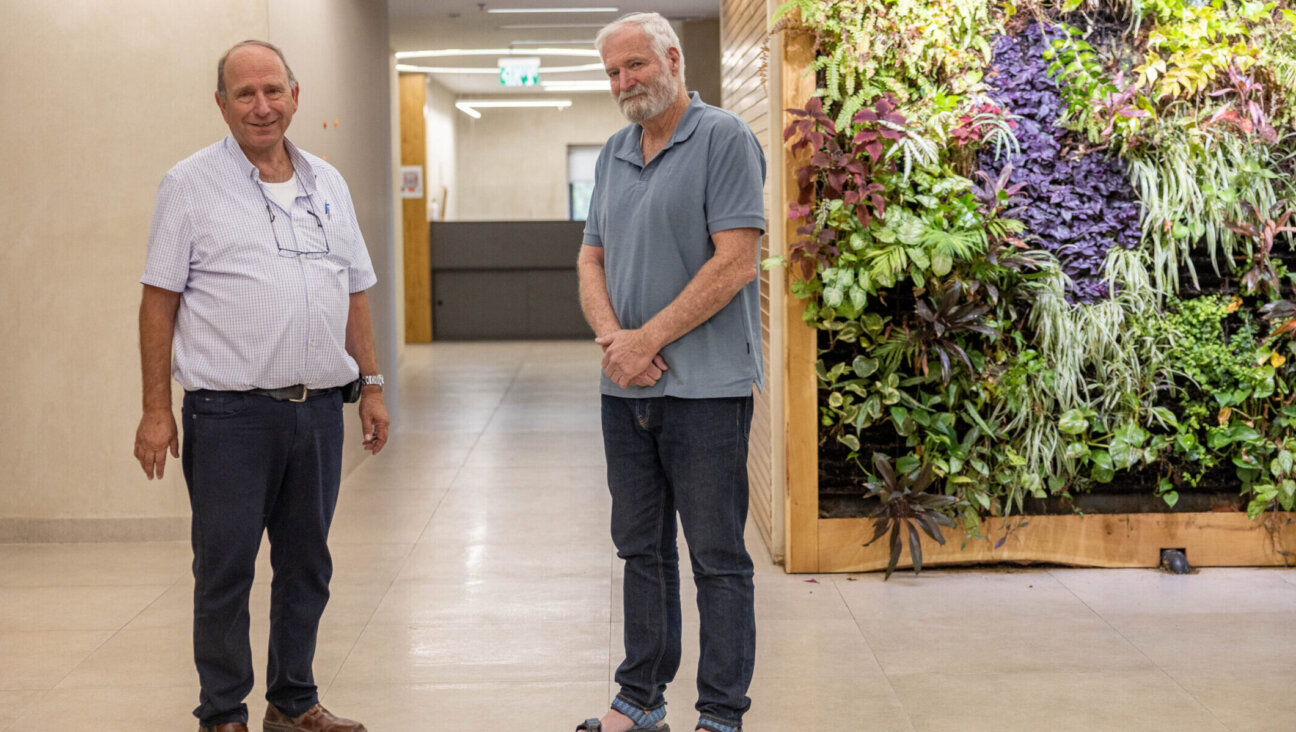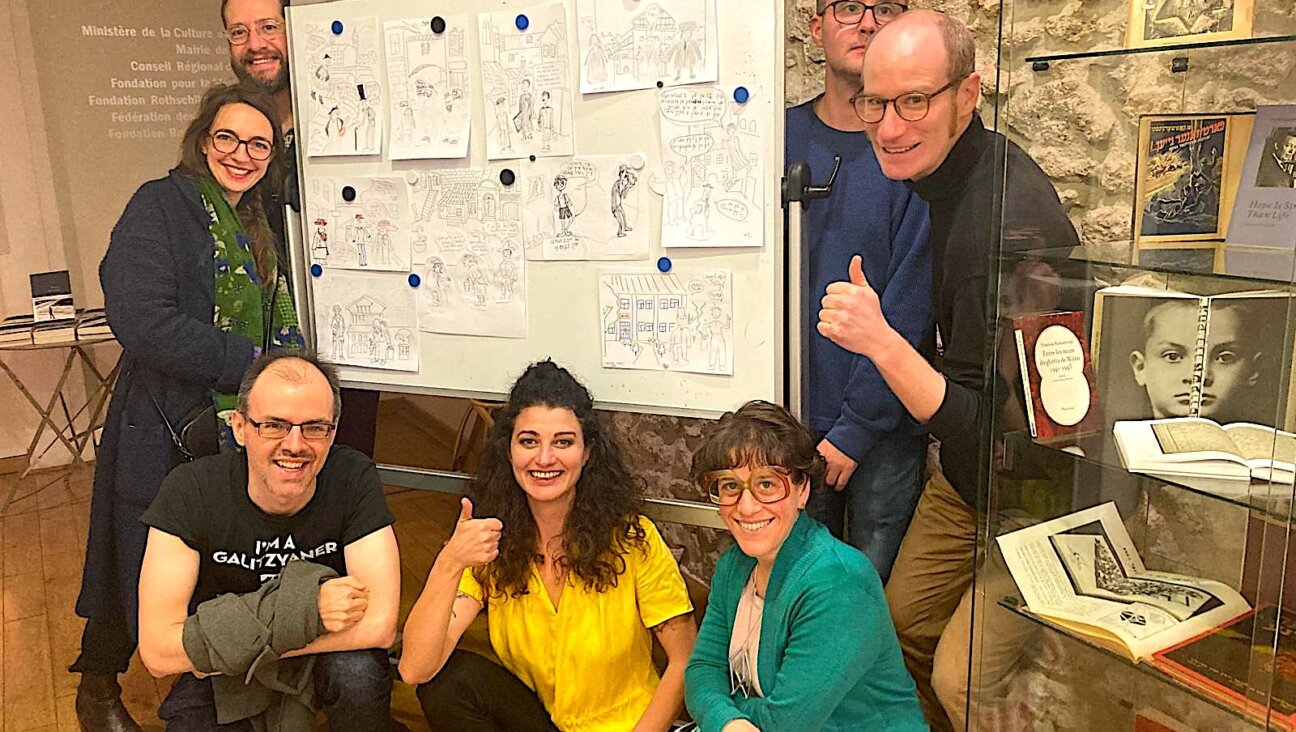Bibi Backers Push to Rebuild Settlements

Homesh sweet Homesh: A rally by settlement activists at the evacuated outpost of Homesh on May 12 drew support from four of Netanyahu?s five coalition partners Image by Homesh First
It was not only Barack Obama who was bringing demands to bear upon Benjamin Netanyahu.
While the Israeli prime minister heard the president press for progress on abandoning the settlements, right-wing activists back home were putting pressure on Netanyahu to do just the opposite. They want him to regress on the issue and turn back the clock to before the 2005 disengagement progress.
Less than a week before the May 18 White House meeting, the activists marched to Homesh, one of the four West Bank settlements evacuated at the same time that Israel pulled out of Gaza. In Homesh, they held a rally on May 12 demanding its re-establishment, and celebrated the festival of Lag b’Omer with a bonfire and musical performances.
While the group drawn to the event was not that large, about 1,500 participants, it was not one Netanyahu can ignore. The activists had the backing of politicians from within four of the five coalition parties, including Netanyahu’s own Likud.
Commentators described it as a flexing of muscles by the settler community ahead of the Washington trip. “It was, perhaps, more Obama Holiday than Lag b’Omer,” said Yaacov Bar-Siman-Tov of the Hebrew University’s department of international relations.
Though the term “disengagement,” with reference to the 2005 process instigated by Ariel Sharon, has become widely used as shorthand for the Israeli pullout from Gaza, the West Bank settlements of Kadim, Ganim, Sa-Nur and Homesh were evacuated at the same time.
In recent months, some settler leaders have sought to capitalize on widespread skepticism among the Israeli public about the success of the disengagement — largely resulting from the Hamas takeover in Gaza — to drum up support for resettlement in the evacuated areas, starting with Homesh.
A group called Homesh First, so-called because it wants to see Homesh re-established before the others, recognizes the difficulty of returning to Gaza, and thus focuses its efforts on those in the West Bank.
“Because, unlike in Gaza, the legal status of these [West Bank] areas is the same as it was [in 2005] — they are still Area C and under Israeli authority — we believe we’ll be able to change the decision,” Aryeh Eldad, lawmaker and head of the Homesh Knesset caucus, told the Forward.
While Eldad represents the National Union party, often described as far right and a small player in the Knesset, the Homesh First campaign has the support of such establishment figures as Moshe Ya’alon and Yuli Edelstein, both members of Netanyahu’s Likud party and ministers in his government.
Ya’alon, former army chief of staff, was personally recruited to Likud by Netanyahu before the February general election, and serves as his vice prime minister and minister of strategic affairs. He wrote a letter that was read at the rally, in which he stated: “I want to bless the participants and support them in the realization of the Zionist way.”
Edelstein, minister of information and Diaspora affairs, also sent a message, declaring “utmost respect for the Homesh settlers and all those who work to resettle the community as part of the settlement enterprise in the Land of Israel.” Lawmaker Danny Danon, chairman of World Likud, attended the event.
Eli Yishai, interior minister and chairman of Shas, wrote a letter to one of the organizers, saying that his “courage and determination are commendable” and saying that he is “certain we will succeed in rebuilding.” Politicians within three of the other four coalition parties — Jewish Home, Yisrael Beiteinu and United Torah Judaism — also are known to support Homesh First.
The Homesh lobby believes that it can get results from the new political landscape, and it held the march to propel the issue on the political agenda. “There is a new government, and it is a friendly government,” said Boaz Haetzni of Homesh First, one of the event organizers. “For the first time, the government of Israel is not the same government [Kadima] that destroyed the settlement [of Homesh]. An opposite party is in power, and we expect that this government will change the situation here.”
Though analysts are highly skeptical about the lobby’s chances of success, they say that it is likely to make life difficult for Netanyahu. “It’s some kind of pre-emptive action to say to Netanyahu and Obama that disengagement can’t happen again,” Bar-Siman-Tov said.
Even if the Homesh campaign does not inflict political damage on Netanyahu in the short term, it is likely to be a thorn in his side throughout his premiership. This is because it has adopted two strategies that are proving effective in keeping its cause on the agenda long term.
On a practical level, activists have not let a failed 2007 attempt to rebuild Homesh deter them from re-establishing a presence there. They have adopted a strategy of settling without settlement. Without establishing any infrastructure, they ensure that a dozen or so activists are stationed there at all times, with many more joining them on the Sabbath. They study Torah during the day and sleep under the stars or in nearby caves.
On a conceptual level, the Homesh lobby has harnessed a national despondency about the situation in Gaza to embolden itself. It also has ensured that resettling Homesh is more than a political issue, making it laden with symbolism of Jewish religion and tradition. In this vein, it has come to present the “return to Homesh” as holding similar importance to the Jewish people as the “return to Zion,” which motivated the early Zionist movement.
“Even in the days of Herzl, people who believed the state would be built in the Land of Israel were in a minority,” Eldad said. “It is not always the case that the belief of the majority of the Jewish people is right. Sometimes we need a small avant-garde.”
The recent event on Lag b’Omer featured celebrations that consciously mimicked the annual celebration held in Meron, in northern Israel. Lag b’Omer is said to be the anniversary of the death of the second-century rabbi Shimon bar Yochai, who is said to be buried in Meron.
As Bar Yochai was supposedly the author of the Zohar, the central work of the Kabbalah, Lag b’Omer is widely celebrated as a mystical festival. But there is another, more nationalistic explanation for celebrating the day, which was employed by some in the Homesh lobby when talking of their celebration. Eldad said: “The ideology of Bar Kochba is relevant even though [the second-century Jewish stronghold of] Betar fell [to the Romans].
“The ideology of Homesh is alive, even though it was evacuated by the government.”
Contact Nathan Jeffay at [[email protected]][1].
[1]: mailto: [email protected]
A message from our CEO & publisher Rachel Fishman Feddersen

I hope you appreciated this article. Before you go, I’d like to ask you to please support the Forward’s award-winning, nonprofit journalism during this critical time.
We’ve set a goal to raise $260,000 by December 31. That’s an ambitious goal, but one that will give us the resources we need to invest in the high quality news, opinion, analysis and cultural coverage that isn’t available anywhere else.
If you feel inspired to make an impact, now is the time to give something back. Join us as a member at your most generous level.
— Rachel Fishman Feddersen, Publisher and CEO






















